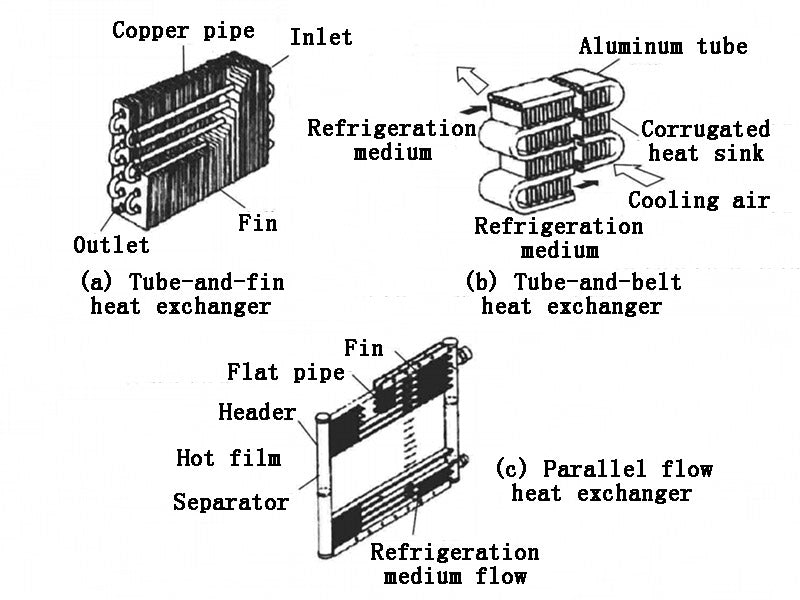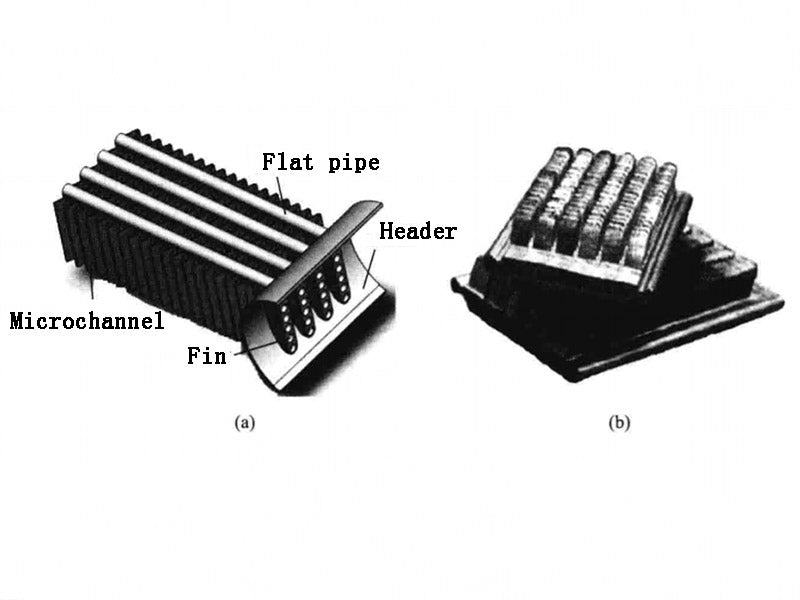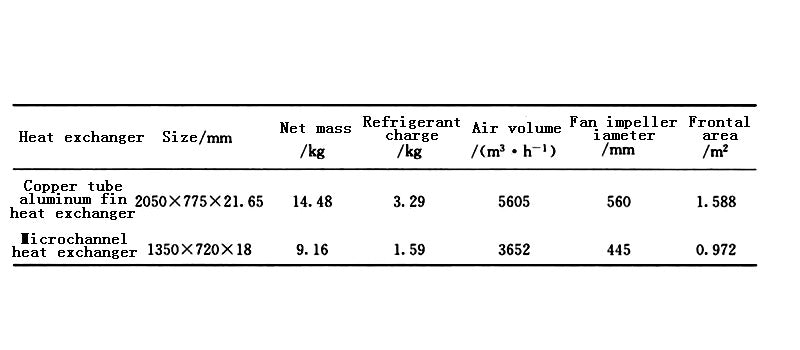
The development of automotive air-conditioning heat exchangers has experienced major structural forms such as tube-sheet, tube-belt and parallel flow. The basic structure is shown in Figure 1. The tube-fin heat exchanger is composed of a round tube and various forms of fins. The fins are installed on the round tube by the sleeve technology, which is easily affected by thermal expansion, reduces the heat exchange efficiency and shortens the service life. The tube-and-belt heat exchanger is welded by multi-channel flat tubes and louver fins. The heat exchange effect on the refrigerant side is significantly enhanced, but the flow resistance loss increases, the heat transfer coefficient on the air side is increased, and the pressure drop is reduced. From the perspective of structure and process, the process is simple, the reliability is improved, the welding process is more complicated, and the difficulty is increased; from the perspective of materials, the flat tubes and fins are made of aluminum, which is light in weight and low in cost. The parallel flow heat exchanger consists of perforated flat tubes and louver fins, but the flat tubes are not bent into a serpentine shape, but each is cut off. Its appearance is to adopt a new type of alternative refrigerant, the heat exchange performance of the parallel flow heat exchanger has been further improved, and it has the advantages of high heat exchange coefficient, light weight, compact structure, and less refrigerant charge.

Figure 1 - Various air conditioner heat exchangers
The concept of microchannel heat exchanger (MCHX) was first proposed by Tuckerman and Pease in 1981, and Mehendale defined it as a microchannel heat exchanger because its hydraulic diameter was less than 1 mm. The micro-channel heat exchanger can reduce the quality of equipment, improve the compactness of the system, and meet the requirements of miniaturization of electric vehicles. In terms of materials, the microchannel heat exchanger can replace copper with a cheap aluminum alloy, which saves costs and greatly improves the heat exchange efficiency. This is mainly reflected in three aspects: high heat transfer coefficient, large heat transfer area, and small heat transfer temperature difference. Compared with the most efficient conventional heat exchanger, when the channel size is less than 3m, the law of gas-liquid two-phase flow and phase change heat transfer will be different from the conventional larger size, the smaller the channel, the more obvious the size effect; when the inner diameter of the tube is 0.5~1mm, the convective heat transfer coefficient can be increased by 50%~100%. This enhanced heat transfer technology is used in air-conditioning heat exchangers. Appropriate changes to the heat exchanger structure, process and air-side enhanced heat transfer measures are expected to effectively enhance the heat transfer of air-conditioning heat exchangers and improve their energy-saving levels. The microchannel heat exchange efficiency of air conditioners is expected to increase by 20% to 30%. The application of microchannel heat exchangers in the cooling of electronic equipment has been widely studied, and with the development of technology, it is gradually used in indoor and automotive air conditioning systems. The traditional microchannel heat exchanger is mainly composed of three parts (ie, flat tubes with multiple parallel micropores, headers and fins), as shown in Figure 2(a). Figure 2(b) is a physical diagram of an integral finned microchannel heat exchanger. The integral fin-type micro-channel heat exchanger is composed of all-aluminum alloy plates, the micro-channel is extruded by a die, and the fins are formed by mechanical cutting. The microchannel and the fin are integrally formed, which fundamentally eliminates the contact thermal resistance, significantly improves the heat transfer performance of the radiator, and does not cause problems such as loosening and falling off caused by welding and poor thermal contact.

Figure 2 - Two types of microchannel heat exchangers
Table 1 shows the comparison between the microchannel heat exchanger with the same power and energy efficiency, and the refrigerant is R22 and the copper tube aluminum fin heat exchanger. It can be seen from the table that the use of micro-channel heat exchangers can save about 40% of space and about 36.7% of mass. The refrigerant charge of the system is 48.3% of that of the copper tube aluminum fin unit, which is required to achieve the same heat exchange effect. The air volume is small, and fans with smaller impeller diameters can be used to further save installation space. In addition, according to the comparison of the thermal characteristics of microchannel and conventional heat exchangers, it can be seen that compared with fin heat exchangers and stacked heat exchangers, microchannel heat exchangers can not only greatly reduce the investment amount, but also greatly enhance the heat exchange capacity.

Table 1 - Comparison of Microchannel Heat Exchanger and Copper Tube Aluminum Fin Heat Exchanger
The micro-channel automotive air conditioner is easily combined with the battery thermal management system based on various cooling principles to enhance the heat dissipation performance of the battery thermal management system. At the same time, the micro-channel automotive air conditioner has a compact structure, can meet the requirements of miniaturization and light weight of electric vehicles, and has a great application prospect.
Read more: What is the technology of vehicle power battery management system?















